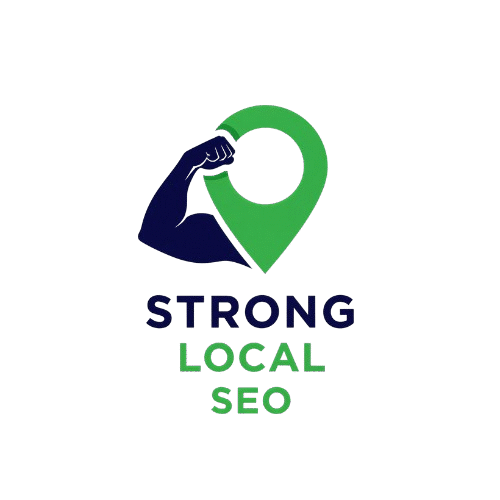In the online space, first impressions count big time. It’s natural to invest in a visually striking website – clean layouts, smooth animations, and bold graphics – to enhance user experience, build credibility, and encourage visitors to stay longer. But here’s the twist: sometimes, that beautiful design can unintentionally harm your SEO efforts.
Absolutely – those same features that captivate your visitors can also create hidden obstacles for search engines. This conflict between UX and SEO isn’t just hypothetical; it’s a real challenge many site owners grapple with but few truly grasp. Let’s dive into why stunning design can sometimes undermine your SEO, and explore how to strike the perfect balance that satisfies both users and search rankings.
When Design Starts to Clash With SEO
Great user experience centers on usability, accessibility, and visual appeal, while SEO’s priority is helping search engines properly crawl, understand, and rank your site. Although these objectives often align, some design decisions can inadvertently hinder your SEO performance:
1. JavaScript Overload Makes Content Invisible to Crawlers
Today’s web design frequently relies on JavaScript frameworks such as React, Angular, or Vue to build dynamic, interactive pages. While these enhance user experience, search engines can have difficulty “reading” content rendered through JavaScript – especially if it’s not implemented correctly. This can cause important elements like key content, headings, or meta tags to be overlooked during indexing, ultimately harming your search rankings.
2. Hidden Navigation and Minimalist Menus Can Bury Your Pages
Clean, minimalist menus may look great but often tuck essential internal links behind hamburger menus or dropdowns. While this can enhance user experience, it can confuse search engines. Google relies on clear, crawlable links to grasp your site’s structure and pass ranking authority. If your most valuable pages aren’t linked prominently, they might miss out on the ranking boost they deserve.
3. Large Images and Media Slow Down Your Site
Visual elements are crucial for keeping visitors engaged, but unoptimized images or videos can significantly slow down page loading times. Slow sites frustrate users and risk triggering Google’s speed-based ranking penalties. Many stunningly designed websites unintentionally trade performance for aesthetics, unknowingly harming their SEO in the process.
4. Too Much White Space Can Dilute Content Depth
Modern design trends often embrace whitespace and brief paragraphs to boost readability. However, this approach can sometimes result in content that feels sparse or lacking depth from an SEO standpoint. Google favors content that fully explores a topic, so if your site sacrifices substance for style, you risk falling behind competitors who provide more thorough coverage.
5. Intrusive Pop-ups and Interstitials Can Harm Rankings
Pop-ups can boost conversions, but they also risk frustrating visitors and violating Google’s mobile usability guidelines. Overly intrusive or persistent interstitials might trigger ranking penalties or cause visitors to leave quickly, ultimately undermining their intended benefits.
How to Harmonize UX and SEO
The good news is, you don’t have to sacrifice a stunning website for SEO success. By thoughtfully blending design decisions with search engine best practices, you can achieve both:
1. Optimize JavaScript for SEO
Implement server-side or dynamic rendering to make sure search engines can fully access and index your content. Regularly check your pages using tools like Google’s URL Inspection to confirm they’re visible and properly crawled.
2. Make Navigation Clear and Crawlable
Create menus that balance user-friendliness with clear structure, ensuring search engines can easily crawl every important link. Incorporate breadcrumb navigation and avoid burying crucial pages too deep within your site hierarchy.
3. Compress and Format Images Smartly
Optimize your images by using modern formats like WebP and compressing files to maintain quality without sacrificing speed. Don’t forget to add descriptive alt text to improve both image SEO and accessibility for all users.
4. Provide Content That’s Both Readable and Rich
Organize your content into clear, easy-to-read sections using headings, but ensure you cover topics in depth. Providing thorough information helps satisfy your audience’s needs and aligns with search engine expectations.
5. Use Pop-ups Thoughtfully
Use exit-intent or time-delayed pop-ups judiciously to avoid disrupting the user experience or running afoul of Google’s guidelines. The goal is to engage visitors without creating frustration or penalties.
6. Monitor Site Speed and User Engagement Continuously
Monitor Core Web Vitals and real user experience metrics regularly. Platforms like Google Analytics and Search Console offer valuable insights into how your design choices impact SEO performance over time.
Why This Balance Is Crucial in 2025
Google’s search algorithm is rapidly advancing, placing greater importance on user experience factors such as page load speed, mobile friendliness, and user engagement signals. Websites that don’t successfully blend strong UX with effective SEO risk being overtaken by competitors who do.
A visually impressive website that loads slowly or blocks content from search engines won’t rank well. On the flip side, a site built just for SEO without considering user experience can suffer from high bounce rates and missed conversion opportunities.
Conclusion
The challenge between UX and SEO isn’t about picking one over the other – it’s about harmonizing both. Stunning design and effective SEO need to work hand in hand. By recognizing how certain design decisions might unintentionally hinder search engines and applying smart, SEO-conscious design practices, you can build websites that engage visitors while climbing the search rankings.
Keep in mind: the top websites in 2025 aren’t just visually appealing – they’re lightning-fast, accessible, packed with valuable content, and easy to navigate for both users and search engines. Aim for that perfect balance, and your site will succeed across the board.

